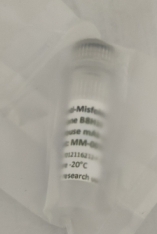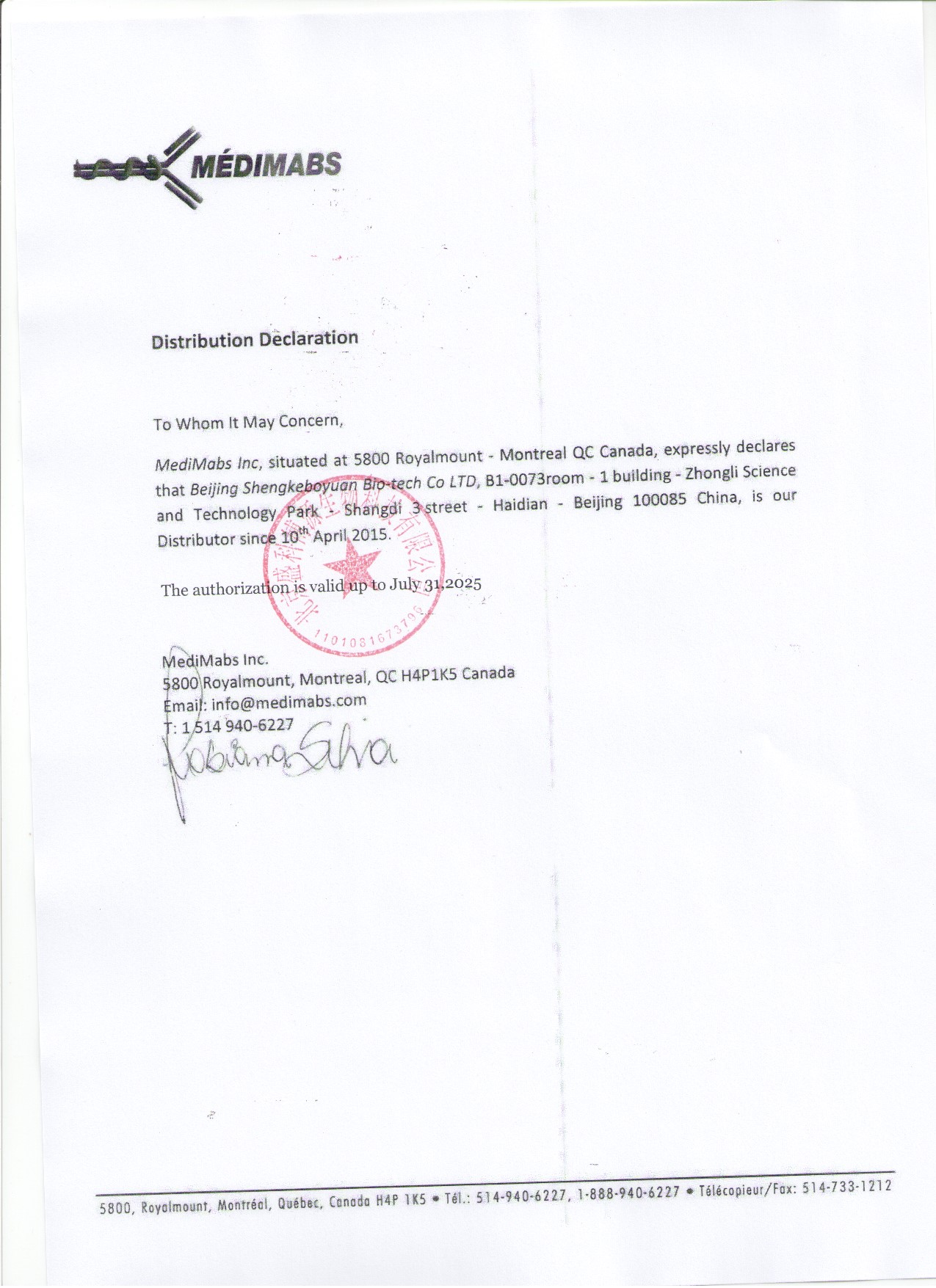 首页>
生物试剂
首页>
生物试剂
商家描述
商家资质信息
产品评价(0)
Target
RFP Tag
Target background
Red Fluorescent Protein (RFP) is a protein derived from the Discosoma sea anemone. Fluorescent proteins are powerful tools to study protein localization and dynamics in living cells. The anti-RFP antibody can be used to detect native RFP and its variants: TagRFP, TurboRFP, dsRed, mCherry, mOrange and tdTomato.
Immunogen
The antibody was raised against RFP from the Discosoma sea anemone N-terminal peptide-KLH conjugated.
Specificity
The antibody recognizes native and denatured forms of RFP and its variants: TagRFP, TurboRFP, dsRed, mCherry, mOrange, tdTomato, etc
Clone ID
RF5R
Isotype
IgG1
Preservative
None
Format
Purified with protein G, stored in PBS pH 7.4 and lyophilized.
Recommend starting dilution
If reconstituted with deionized water in 100 µl: WB 1:1000-3,000, IHC 1:500-2,000. Optimal dilution has to be determined by the user.
Limitations
Research Use Only
Storage
Lyophilized antibodies can be kept at 4ºC for up to 3 months and should be kept at -20ºC for long-term storage (2 years). To avoid freeze-thaw cycles, reconstituted antibodies should be aliquoted before freezing for long-term (1 year) storage (-80ºC) or kept at 4ºC for short-term usage (2 months). For maximum recovery of product, centrifuge the original vial prior to removing the cap. Further dilutions can be made with the assay buffer. After the maximum long-term storage period (2 years lyophilized or 1 year reconstituted) antibodies should be tested in your assay with a standard sample to verify if you have noticed any decrease in their efficacy. To limit antibody loss or degradation, BSA (final concentration 1%) and sodium azide (final concentration 0.02%) can be added to the suggested first dilution. It is important to first verify if those preservatives are compatible with your assay.
 会员登录
会员登录.getTime()%>)
 购物车()
购物车()

 成功收藏产品
成功收藏产品
